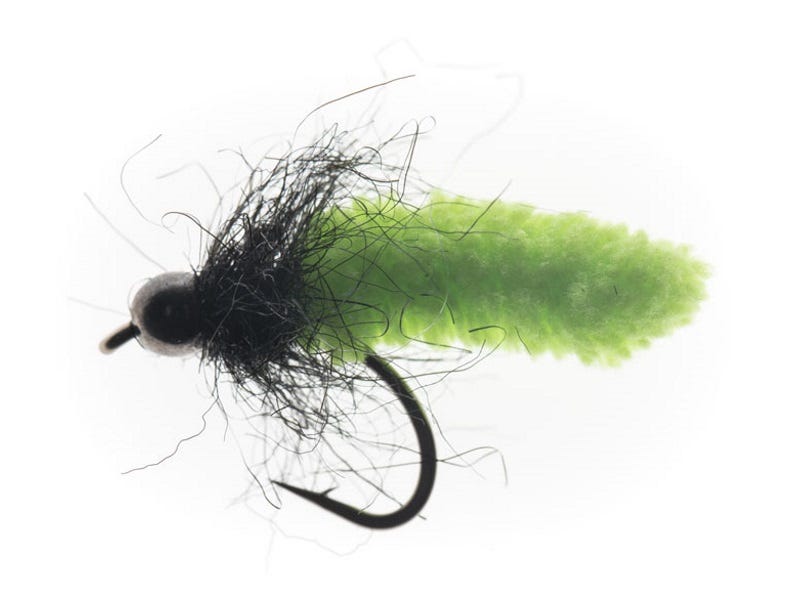Fly of The Week: Mop Fly


There are several words and phrases used to describe the Mop fly. And none of them are admiring. In fact, I’ve heard, “Sinful, abomination, an assault to the senses.” Those are the G-rated expressions.
From what I’ve gleaned from the fly-tying community, this fly was created in North Carolina about 10 years ago by Jim Estes. It gained popularity and its reputation when Lance Egan won the U.S. National Fly Fishing Championship back in 2016. Since then, the Mop has been banned from use in several competitions and locations.
That resentment comes from people who prefer traditional materials and hold a bias against flies the don’t fit that mainstream mentality. Some would say it’s a fly that you either love or hate.
The name, alone, gives you a good idea of what the fly is made of. The microfiber chenille fingers you find on mops, bathroom throw rugs, wash mitts, and even pet toys, are the main ingredient to the fly. Since its creation, this fly has taken on a few different variations, but overall its simplicity is what makes this fly—it’s easy to tie.
Originally it was tied on a larger scud hook. Most are now tied on some type of a heavy, short-shank hook and 60-degree jig-hooks. A brass or tungsten bead gets the fly down where it works best. Besides the microfiber chenille, the collar is usually tied with one type or another of synthetic blend dubbing. Tan, cream or lite gray are the most popular body colors, but there are many others that work well
The Mop flies best attribute is the movement that comes from its microfiber body. It just moves no matter what water it is fished in. We all know movement is one of the main things a trout looks for and this fly has it. So, what exactly does it look like in the world of fish food? Some say in the cream or tan colors it looks like a crane fly larva or an uncased caddis larva. I tie one with a chartreuse body and legs, and use it as a dragonfly nymph. When tied in orange, pink or any of the other none-buggy colors it works really good as an attractor pattern.
I fish this fly like any other nymph pattern. If you are fishing moving water you can drift it with a tight line and a nine-foot leader. Nymph it under a strike indicator dead-drift it. When fishing still waters I place it under an indicator and fish it just off of shore in shallow water close to the bottom. Just remember to put some movement into the fly and let that mop finger come alive for you. Don’t be afraid to use a few of these sinful abominations next time you’re out on the water. I promise I won’t tell anyone.
